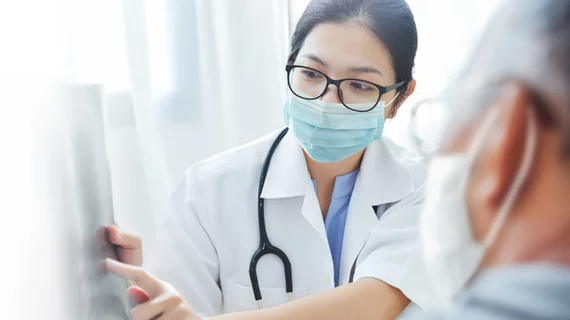COVID-19 vaccine side effects extend beyond breast exams, now impacting nearly all imaging modalities
Radiologists and other providers must remain cognizant of lymph node swelling appearing on a variety of imaging exams in people who have been vaccinated against COVID-19, particularly cancer patients, according to new research published in Radiology.
Vaccine-related axillary lymphadenopathy has been widely reported in women undergoing annual mammograms, with many organizations, such as Intermountain Healthcare, recommending patients schedule screenings around their vaccinations.
University of Minnesota researchers on Wednesday said post-vaccination lymphadenopathy is now extending beyond just breast exams, and doctors need to be aware.
“Although lymphadenopathy related to vaccination has been known in breast cancer imaging, the unprecedented administration of COVID-19 vaccines is affecting almost all modalities of imaging,” Can Özütemiz, MD, a radiologist at the Minneapolis institution, and colleagues explained in the report.
The group looked at five clinical cases in which patients presented with enlarged lymph nodes mimicking cancer after receiving the Pfizer-BioNTech vaccine.
In one case, a 32-year-old woman came in with a neck mass on her left side with a subsequent biopsy showing metastatic lymph node with a malignant melanoma mutation. She then received a PET/CT scan which revealed left intraparotid lymphadenopathy. Doctors later found out the patient received her second vaccine six days before the molecular imaging exam. After attributing the lymph node abnormality to this vaccination and discussing it with the patient, she opted for observation over biopsy.
The other four cases follow a similar trajectory, with patients coming in for an MRI, ultrasonography, or PET/CT exam which shows the common lymph node side effect. In some cases, women with a strong family history of breast cancer show concerning findings closely resembling cancer.
Importantly, Özütemiz and colleagues noted two of their cases had pathologic confirmation of non-cancerous lymph node enlargement, the first such examples in the published literature, they added.
“Overall, our findings are important, particularly for cancer patients,” the researchers wrote. “Radiologists, oncologists, and internists should be aware of this secondary effect of vaccination to obviate unnecessary changes in management, unnecessary patient emotional stress or biopsy.”
Read the entire case series published Feb. 24 in Radiology here and click here to read about how Harvard radiologists are managing vaccine side effects.

